Harbor master Timothy Cox cut his patrol boat through the midnight calm of the New Bedford Harbor. His floodlight scanned the inky-black water, sweeping over the stacks of burly, rusted fishing boats and processing plants that make this spit of paved riverbank the nation’s top-earning commercial fishing port.
It was his normal rounds. But on this night his lamp flashed across something unusual: a glimpse of gray and fleshy white bobbing just above the surface. He inched the boat closer. There, at the foot of the city’s newly developed offshore wind yard, was the ridge of a twenty-three-foot minke whale floating dead in the harbor.
It was July 2, 2023, and New Bedford, along with the Cape and Islands, was at the center of a transitional moment in the nation’s energy future. The month before, Vineyard Wind had broken ground, becoming the first offshore wind project to place “steel in the water” some fifteen miles south of Martha’s Vineyard.
The development marked a giant leap in the years-long effort to get an offshore wind farm built and approach the Biden administration’s renewable energy goals. Over the next decade, roughly 3,400 more turbines are slated to be built across 2.4 million acres of ocean. But the industry’s advancements that month were met with a parallel string of news coverage: dead whales had been washing up in unprecedented numbers up and down the East Coast.
The unsettling trend washed ashore on Martha’s Vineyard that month too. Just one week after Vineyard Wind began construction, a decomposing humpback whale was found in the surf on South Beach in Edgartown. Early the next morning, a second humpback whale carcass was discovered almost five miles away on East Beach on Chappaquiddick.

Since then, the toll has continued to climb. In 2023, federal scientists documented the death of twenty-five minke whales, thirty-seven humpback whales, and two critically endangered right whales off the East Coast – the highest total number since an “unusual mortality event” was declared for humpback and right whales in 2017. A year later, the same was declared for minke whales.
“It’s an uncomfortable truth,” said Michael Moore, a veterinarian, biologist, and director of the Woods Hole Oceanographic Institution (WHOI) Marine Mammal Center. “The trauma that we are seeing, with right whales especially, is horrendous.”
As evidence of that trauma has become more visible and offshore wind development has ramped up along the East Coast, whales have taken an outsized role in what in reality is a complex negotiation about energy, climate change, competing industries, and coastal views. On a national level, the unusual spate of whale deaths has become a political cudgel, weaponized by fossil-fuel interests to cast doubt on renewable energy. On a local level, it has become a sort of Rorschach test, reflecting an array of fears brought by offshore wind. The bitter debate has forged bizarre enemies and even more twisted alliances, pitting conservationists against environmentalists and aligning salty New England fishermen with greasy Texas oil lobbyists.
I’m not here to convince you that offshore wind is killing whales. We know the answer – and that is that we don’t know. As the National Oceanic and Atmospheric Administration (NOAA) has repeated, there are “no known links” between increased offshore wind development and an increasing number of dead whales. But neither has that government agency provided a clear explanation for the unprecedented number of whales washing up dead along the East Coast. NOAA says it has conducted partial or full necropsies on about half of the dead humpback whales, which accounts for all the whales the agency is able to reach in a suitable state of decomposition to perform a necropsy. Of that sample, 40 percent had evidence of either ship strikes or fishing gear entanglement. That means, in total, there is no determined cause of death for 80 percent of the dead humpback whales that have washed up since 2017.
So, in the absence of answers, speculation has filled its place, raging through Facebook groups or the comment sections of local news outlets. Both those for and against offshore wind development have latched onto whales as a symbol of their cause. On the one side, some believe that it is undoubtedly fishing gear, oil tankers, or climate change that is killing whales, and each dead whale represents another reason to build out renewable energy sources such as offshore wind.
“Right whales are endangered and climate change is impacting every aspect of their survival – from changing ocean habitat, prey availability, and affecting migratory patterns – making the transition to cleaner, renewable energy critically important,” a NOAA fisheries assistant administrator said in a statement earlier this year.
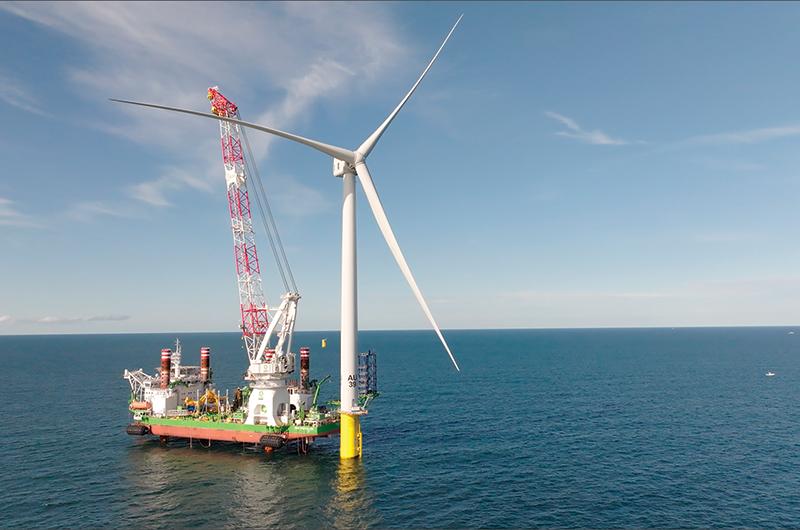
On the other side, many are convinced that offshore wind development itself is what is killing whales, and each dead whale marks another casualty of ocean industrialization.
Perhaps this was to be expected. Whales, specifically the dead kind, are no stranger to this part of the world. It was in New Bedford, some 180 years ago, that Herman Melville climbed aboard a whaling ship in pursuit of adventure and, of course, whales. But on that journey, he also found himself in pursuit of a question: what was the meaning of the crew’s relentless pursuit of the whale? What is the meaning of the whale itself?
“Speak, thou vast and venerable head,” Captain Ahab quietly muttered to the severed head of a whale that had been hoisted aboard the ship as the crew on deck stripped it of its blubber. “Speak, mighty head, and tell us the secret thing that is in thee.”
Some century and a half later, it’s a question we are still asking ourselves. There’s little doubt that offshore wind development, for all its benefits, will have an impact on the marine ecosystem. That will take place far offshore, deep beneath the surface of the ocean and on the microscopic scale of zooplankton and fish spawn. These impacts are real, and calculated, to some extent, by federal scientists and oceanographers. But they are also complicated and almost impossible to visualize. All we are able to see are the dead whales washing up along the coast – a gargantuan, unavoidable symbol that something is wrong.
So, what do we really talk about when we talk about whales? As it turns out, it largely depends on how you feel about offshore wind.
In March, Menemsha fisherman Wes Brighton pulled his scallop vessel through the New Bedford hurricane barrier to offload his catch. He was on return from a seven-day trip, the last trip of a challenging year for one of the region’s most lucrative fisheries. Ocean acidification and swells of warm currents breaking off from the Gulf Stream have depressed the growth of juvenile scallops in recent years, causing a slump in population. As a result, annual scallop landings have declined by more than fifteen million pounds since 2019. Fishermen like Brighton and his crew are feeling the pinch.
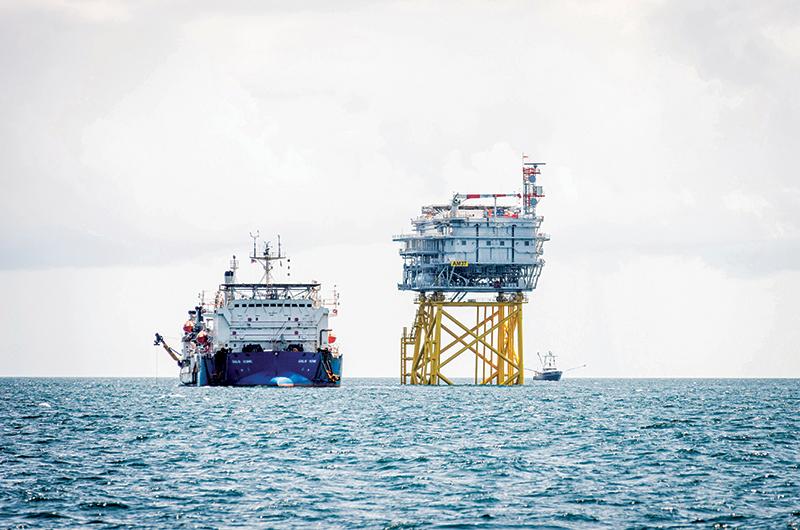
Commercial fishing and offshore wind converge on the Port of New Bedford. Brighton peered through the helm at the rows of fishing boats lining the harbor. Each year, some 390 million pounds of seafood move through the waterfront, making it the nation’s top-earning commercial fishing port. It has also become an industrial hub for offshore wind. Nearby, he shifted his gaze to the dozens of generators, blades, steel monopiles, and a massive cargo ship fitted with cranes used to offload the turbine components shipped in from overseas. Broken into thirds, each monopile section stands over 200 feet tall, stretching out over the New Bedford skyline and dwarfing even the city’s tallest buildings. For years, the fishing industry had seen offshore wind as a storm looming far on the horizon. But now, as that stretch of waterfront made clear, they were right in the eye of it.
New Bedford fishermen have bucked against offshore wind development, and tensions have remained high as the ships of each industry dance around each other through the port. The city’s mayor, Jonathan Mitchell, remains certain the two can co-exist. He has pitched offshore wind as a way to diversify the industries of a city that lives and dies by the daily price of its seafood. But the fishermen have made their opposition clear. Some fishing boats fly white flags with a red circle and slash cutting through a turbine. “This is the war, and we’re going to lose,” the director of operations at a New Bedford seafood company told a local news outlet last year.
“Fishermen are scared to death,” Brighton said, in a recent interview. But he also is frustrated by the narrative that he says reduces the fishing industry to cartoonish Luddites, easily dismissed symbols of a misguided and natural resistance to necessary change. “When we speak out, people only see us as an ignorant guy in a yellow hat like the logo on Gorton’s fish sticks. The reality is we believe in climate change. We can see it; we are experiencing it; we are on the front lines of it. But our food system has made people callous to the fact that it is actually fragile, and industrializing critical fishing habitat is going to put us all at risk.”
It’s not just fishermen that have sounded the alarm and been dismissed. Since 2018, fisheries regulators and federal scientists have been warning the Bureau of Ocean Energy Management (BOEM), which oversees offshore wind permitting, about the impact offshore wind can have on fishing grounds. In letters, they have outlined how repeated blasts from pile driving turbines into the ocean floor can cause “fish kills,” and how the sound-wave impact can cause a “cumulative stress response” that disrupts the ability of fish to feed or spawn, resulting in a “permanent loss” of habitat for bottom-dwellers, such as cod.
“The multiple wind energy projects planned along the East Coast will have cumulative and compounding effects on our fisheries,” the three regional fishery councils on the eastern seaboard wrote to the head of BOEM. They added that the “effects will increase in magnitude as more projects are built.”
Those projects include raising 3,411 turbines and laying 9,874 miles of cable spanning nearly 2.4 million acres of ocean, an area roughly twice the size of Delaware. But the impacts are especially severe in a relatively small spawning habitat known as Cox Ledge, approximately twenty miles south of Point Judith, Rhode Island. It is the northernmost area zoned for offshore wind, which is currently under development by South Fork Wind. A fisheries administrator cautioned BOEM that the turbine locations “may result in cascading long term to permanent effects to species that rely on this area for spawning,” and that the habitat “may take years to decades to recover.” Even in its own words, South Fork Wind developers were explicit about the risks: “Intense sound pressure waves” may result in “injury or mortality caused by rupturing swim bladders or by internal hemorrhaging,” the developer wrote in its approved construction plans.
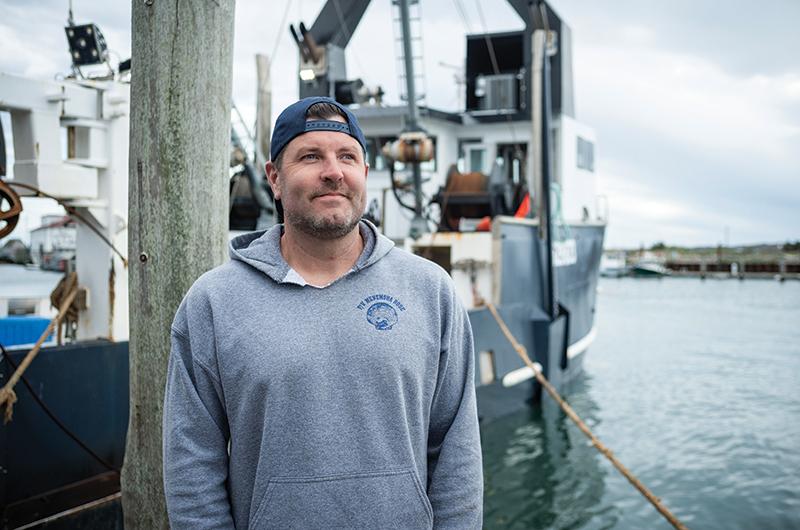
“I’m not gonna sugarcoat this,” said Ken Kimmell, chief development officer at Avangrid Renewables, part owner of Vineyard Wind, speaking at an offshore wind panel in December. “You can’t go in and pretend that there’s no impact….You have to acknowledge it.”
But these types of impacts to a complex ocean ecosystem are exactly that: complex. They are measured in sound wave charts, maps of benthic habitats, and buried in dense environmental impact statements or construction plans. It’s all too much. So, instead, fishermen have latched onto whales as a symbol of the potential impacts of offshore wind. It’s a better mascot than scallops, squid, or cod spawn.
For some, it seems ironic. Aren’t fishermen themselves, and decades of relentless overfishing, responsible for collapsing fish populations? Isn’t it fishing nets and lobster lines that are responsible for killing whales? NOAA has determined that, from the whales they have examined, fishing gear entanglements and vessel strikes account for at least 40 percent of the dead humpback whales washed ashore since 2017. In February, the twelve-ton female right whale that was found dead near Cow Bay in Edgartown was discovered to have fishing rope carved deep into the flesh around its tail. The problem of vessel strikes is real and longstanding, even if the figures are potentially misleading. NOAA lumps together whale deaths caused by fishing gear with those caused by vessel strikes, which could include cargo ships, oil tankers, or any other type of marine traffic as well as fishing vessels. The figures could also include offshore wind vessels, which have significantly increased in presence since development began off the East Coast.
Regulators expect wind energy development to have at least some impact on whale populations. NOAA has issued “incidental harassment” permits allowing developers to “disturb” marine mammals by disrupting their behavioral patterns, including: “migration, breathing, nursing, breeding, feeding, or sheltering.” Vineyard Wind, for example, is authorized to harass up to sixty-six humpback whales, one hundred minke whales, thirty-eight fin whales, and twenty right whales during its first year of construction. Similar permits are issued to other offshore wind developers as well as oil exploration projects and military sonar exercises. The permits do not allow developers to kill the whales, which could result in those permits being revoked. But with incomplete necropsy data, it’s difficult to tell if the permitted “harassment” could become fatal.
“There is no tool that we could pick up and use to determine that a whale was killed by offshore wind,” said Moore, of WHOI. “There is always a possibility that there is something we don’t know. What we do know is that whales have been dying from trauma from vessel strikes and fishing gear entanglement.”
Fishermen in New England feel the blame is misplaced, or at least unfairly weighted on their livelihoods. “Still,” Brighton said, “we are vilified as the only culprit.”
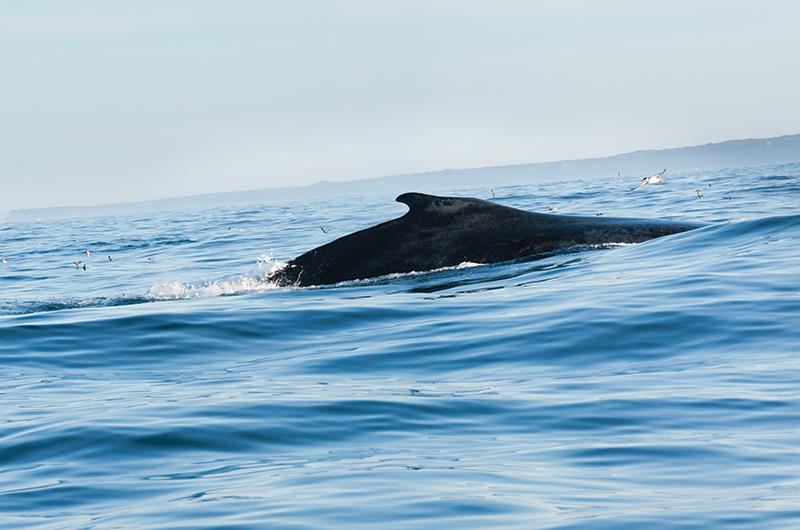
To drive this message home, the fishing industry made a strange bedfellow: big oil. In 2021, a coalition of commercial fishing companies filed a lawsuit against BOEM and Vineyard Wind, claiming the development would cut fishermen off from valuable fishing areas and destroy habitat for right whales. But the financial muscle behind the lawsuit came from far away, deep in the heart of oil country. The fishing industry was represented pro-bono by lawyers from the Texas Public Policy Foundation, a nonprofit backed by fossil-fuel companies.
“It’s kind of an unholy alliance,” said Les Kaufman, a professor in Boston University’s marine program and a fellow with the New England Aquarium. “The oil companies seem to be co-opting the campaign to protect whales for their own interests.”
The legal challenge was dismissed last year. But it was just the beginning of fossil-fuel interests stirring up an already murky pool of information to discredit offshore wind development. It includes groups like the Cooler Heads Coalition, Americans for Prosperity, and the Heartland Institute, which present themselves as disinterested libertarian think tanks, though funded by the likes of ExxonMobil and the Charles Koch Foundation. After the group Nantucket Residents Against Turbines joined forces with the Caesar Rodney Institute, which is funded in part by the American Fuel & Petrochemical Manufacturers trade association, the group changed its name to ACK For Whales and quickly shifted its priorities from obstructed coastal views to saving the whales.
These organizations have provided funding to local groups opposed to offshore wind, such as the fishing industry, exploiting somewhat rational concerns to advance their own agenda of maintaining our reliance on fossil fuels. The litigation and media campaigns funded by these groups tend to have the same refrain: the only way to save the whales is to stop offshore wind.
“Time To Save the Right Whales From the Green Left?” was the headline of an op-ed written by the co-founder and president of the Committee For A Constructive Tomorrow, funded by fossil fuel companies, which also recently sued the government to overturn the approval of offshore wind projects on behalf of protecting whales. The same group advocates for oil drilling in the Arctic, though it holds no alliance with polar bear conservancies.
“It is all confabulated together in a glorious story that is twisted to benefit the particular stakeholder,” said Moore. “It gets to the point where, if you say something loud enough, people think it has to be true.”
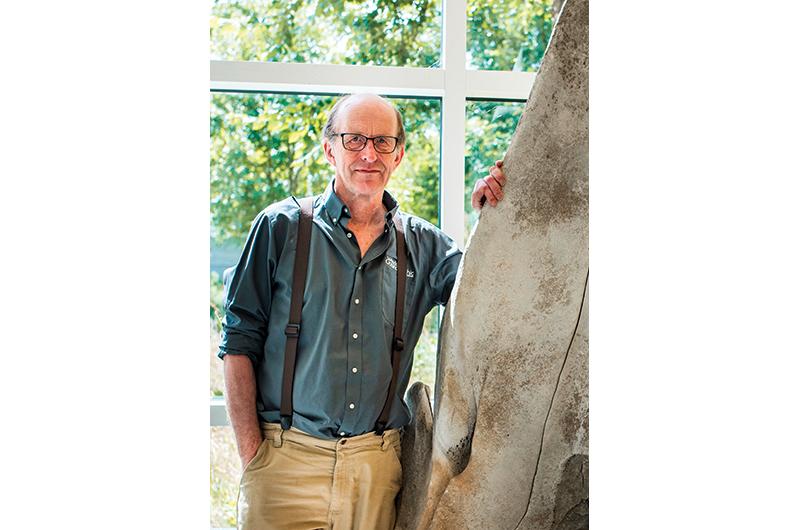
Beneath the dizzying doublespeak, and the flurry of disingenuous concern spun by oil lobbyists, dead whales are still washing up at an alarming rate along the East Coast – and scientists are still looking for answers.
Moore, who routinely treks out along beaches to study and potentially diagnose a cause of death for these whales, said in his more than forty years of research, there is only one common theme: consumer demand. It’s the subject of his book, We Are All Whalers: The Plight of Whales and Our Responsibility (University of Chicago Press, 2021), which poses the uncomfortable theory to readers that the global supply chains and all industrial ocean operations – each for our consumer benefit – have created a traumatic environment that whales are having a hard time surviving.
“Our lifestyle drives the trauma that these animals are suffering from,” he said. “Whether it be fishing, or shipping, or energy exploration, it is going to disturb the physical, chemical, and biological balance that has evolved for a healthy, productive ocean. There is no easy answer for that.”
Back in New Bedford, as the sun rose over the port, harbor master Cox wrapped the stern line of his patrol boat around the tail of the twenty-three-foot minke that had been floating in the harbor since the night before. Months later, scientists would determine the whale had a fractured skull, likely from being struck by a vessel. The type of vessel isn’t clear, and an official necropsy has not yet been released. Sometimes, a dead whale is just a dead whale, one researcher told me.
But on this morning, one dead whale was so much more. Fishermen were quick to point out that the whale had been found dead at the foot of the city’s newly built offshore wind yard. One Facebook post suggested the whale was killed by fishermen and placed there in protest of offshore wind development. Others theorized it had chased a school of fish through the hurricane barrier, couldn’t find its way out, and suffocated in the polluted waters of the port. Regardless of the answer, the dead whale had the potential to spell a public relations crisis for both offshore wind and the fishing industry, and the city wanted the situation handled promptly.
Cox, in his patrol boat, towed the whale across the harbor to Fairhaven. There, the bloated, fleshy carcass was hoisted out of the water with a crane. For a brief moment, the whale was suspended, hanging between the two conflicting worlds of the New Bedford waterfront. On one side were the cranes and massive cargo ships loaded with offshore wind components. On the other, the endless stacks of commercial fishing vessels that make up the nation’s top seafood port.
I watched as the decaying carcass twisted in the wind, lumps of flesh peeling off its belly and splashing into the water below. I thought of the years I had spent as a local reporter covering this story. I thought of my time spent at sea, working on the decks of fishing boats, and the whale ribs we often found lodged in the dredge. I thought of Captain Ahab leaning over the gunnels of his ship and muttering his existential queries to the severed head of the whale. I thought of the long, arching history of New Bedford, stretching back to the whaling days, and how it is now reclaiming its title as the “city that lit the world.”
Then, the whale was lowered, landing with a dull thud onto the rear of a municipal flatbed truck. It was wrapped in a light-blue tarp, its tail hanging over the bumper, and trucked off to the Cape for research. I realized it was the first time I had ever seen a whale.

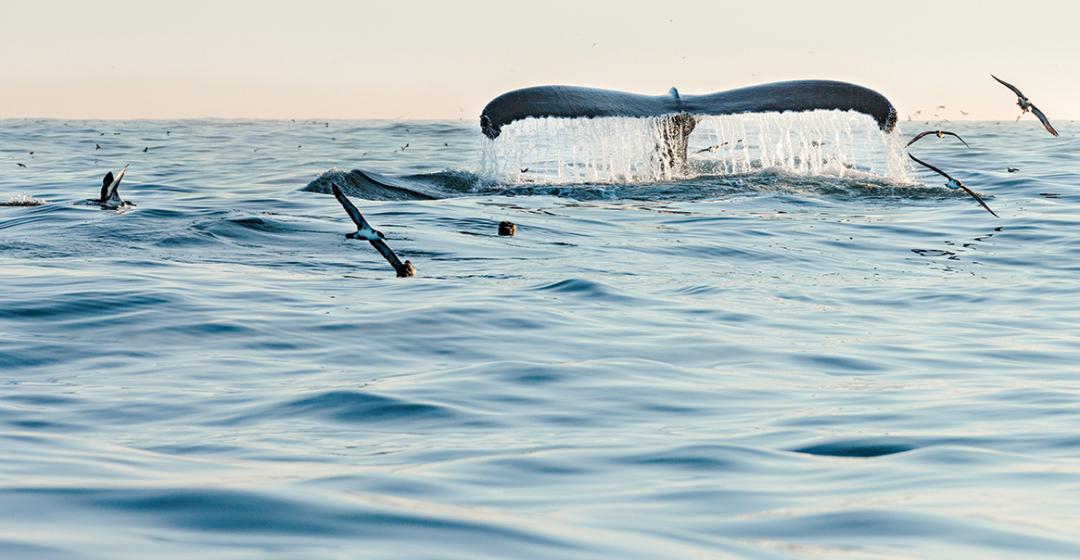


 1 comment
1 comment
Comments (1)